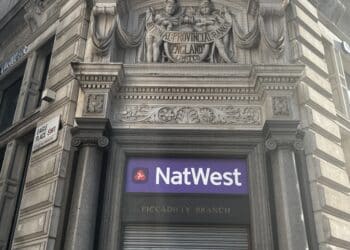Lending Club Underwriting Questioned As Chargeoffs Climb
 Scandals aside, Lending Club has been doing well in the area that mattered — borrowers were paying back their loans.
Scandals aside, Lending Club has been doing well in the area that mattered — borrowers were paying back their loans.
But a new report from the Wall Street Journal indicates that chargeoff rates at Lending Club are up 38% since 2013. This is troubling because credit card default rates decreased over the same period. They now stand at 3.2%, down from 3.8% in 2013.
Gross chargeoffs on Lending Club’s lower-rated loans one year after issuance reached 6.3% in 2016, up from 4.6% in 2013. Lending Club’s higher-rated loans performed better, with chargeoffs climbing to 1.51% from 1.46%, Lending Club said in a May presentation. It is worth noting, as Lending Club points out, that the lower-rated loans comprise just 25% of total loan volume. the other 75% are naturally higher rated.
This declining performance has cast doubt over Lending Club’s underwriting, which has de-emphasized staples of traditional lending such as income verification. In the first quarter of 2016, Lending Club verified actual income for just 27% of loans, down from 49% in 2013. But in 2012 Lending Club revealed data showing income verification was not a reliable indicator of a borrower’s performance. More loans based on verified income went bad — 12% — than loans with no income verification — 7%.
Lending Club built its business making unsecured personal loans at relatively high interest rates to customers banks wouldn’t — or couldn’t — lend to. On the other side, loans were funded by investors, then sold. The company’s CEO resigned suddenly in May when it emerged he had violated company policies, apparently to boost loan volume.
Prosper Marketplace, which like Lending Club makes unsecured personal loans, has also seen loan quality degrade. In May, the company reported that 4.2% of the principal it loaned since the first quarter of 2015 had been charged off, up from 3.0% and 3.8% a year previously.
Overall it is an ominous time for alternative lenders. The economic climate does not appear favorable, and regulators are showing an increased interest in online loans. Both Lending Club and Prosper have increased rates to satisfy investors. Lending Club also tightened credit guidelines in an effort to improve borrower qualify, a spokesman for the company told Bank Innovation.
One investor, in any case, remains pleased with the company:
Say what you will about LendingClub, I have few other investments earning 11.43%… pic.twitter.com/wVBACXIBX5
— John Waupsh (@waupsh) July 2, 2016
Denise Valentine, senior analyst and consultant with Aite Group, suggested that it may be largely a matter of perception rather than fundamentals that is troubling Lending Club.
“Lending Club is in a very sensitive position,” she told Bank Innovation. “Anything that is said that might be perceived as a negative could compound their problems. There could be some truth to what they’re saying, but it almost doesn’t matter.”
But the alternative lending industry may ultimately benefit from the past few months’ growing pains, severe as they were, Valentine said. “There will be repercussions from what has transpired, and that will transform this industry.”
This post was slightly updated following feedback from Lending Club after publication.












Lending Club is proud of our track record of delivering attractive, risk-adjusted returns to investors. The company has provided a recap of recent credit performance here: http://blog.lendingclub.com/recap-credit-strength-lending-club-platform/.